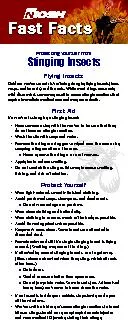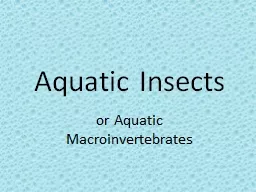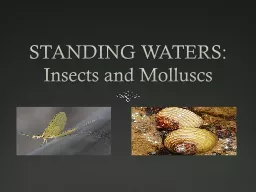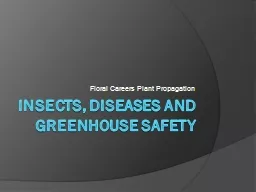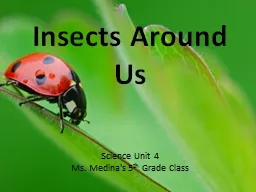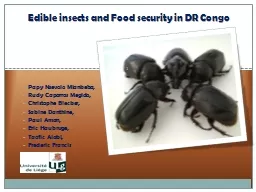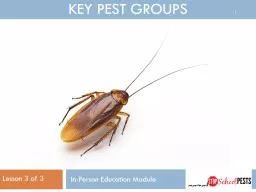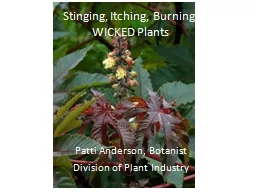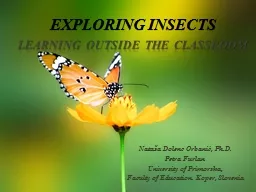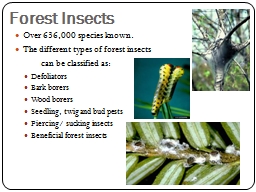PDF-Stinging Insects
Author : karlyn-bohler | Published Date : 2015-11-02
Fast Facts Flying Insects Outdoor workers are at risk of being stung by ying insects bees wasps and hornets and re ants While most stings cause only mild discomfort
Presentation Embed Code
Download Presentation
Download Presentation The PPT/PDF document "Stinging Insects" is the property of its rightful owner. Permission is granted to download and print the materials on this website for personal, non-commercial use only, and to display it on your personal computer provided you do not modify the materials and that you retain all copyright notices contained in the materials. By downloading content from our website, you accept the terms of this agreement.
Stinging Insects: Transcript
Fast Facts Flying Insects Outdoor workers are at risk of being stung by ying insects bees wasps and hornets and re ants While most stings cause only mild discomfort some may result in severe. by Deep Patel . Taxonomy. Kingdom: . Animalia. Phylum: . Cnidaria. . Class: . Anthozoa. Subclass: . Hexacorallia. Order: . Actiniaria. Scientific Name:. . Anemonia. . sulcata. . Overview. Predatory sea-dwelling animals. Engineers. Engineers make things to solve problems and to help people.. We can observe . nature in action and use that knowledge to inspire new ideas. . We can copy . things found in nature. This is called . What is An Insect? . Insects are invertebrates (they do not have a backbone or internal skeleton. Instead, they have a hard exoskeleton on the outside of the body.). Insects . h. ave three distinct body parts:. o. r Aquatic . Macroinvertebrates. Classification. Kingdom . Animalia. (Animals) . Phylum . Arthropoda. (Arthropods. ). . Class . Insecta. (Insects). What it Means. "Aquatic" means water. "macro" means big (or big enough for us to see without using a microscope). M. olluscs. Aquatic Insects. WHAT ARE INSECTS?. Insects are the most successful group of animals on earth.. Over 1 million species of insects have been identified.. Insects have been classified into 30 different orders.. Floral Careers Plant Propagation. Major Insect Pests . in the Greenhouse. Aphids. Thrips. Whiteflies. Mealybugs. Spider Mites. Aphids. Immature & Adult Greenhouse . Thrips. Greenhouse Whiteflies. Science Unit 4. Ms. Medina's 5. th. Grade Class. Arthropods. . Insects are known as Arthropods. Why?. The body has 3 body parts: Head, Thorax, and Abdomen. The head has 1 pair of antennae and 1 pair of eyes. . insects. and Food . security. in DR Congo. . Papy . Nsevolo. . Miankeba. ,. . Rudy . Caparros. . Megido. , . Christophe . Blecker. , . Sabine . Danthine. , . Paul Aman, . Eric . Haubruge. In-Person . Education Module. 1. Learning Objectives. How to identify key exterior and landscape pest groups, including:. Biting and stinging pests. Flies. Ants. Cockroaches. Rodents. Wood-destroying insects. Lesson 1 – Insect Classification and Taxonomy. Lesson 2 – Insect Life Cycles. Lesson 3. . – Insects: Knowing Their Roles. Lesson 4 – . Insects: What’s in Their Mouths. Lesson 5 – . Insect Adaptations . 12,000 from Honduras. Almost the whole world. Welcome. . to. . the. . CURLA . Entomology. . Museum. Gr 2-4. Vertebrates. Animals. . with. a . spinal. . column. Mammals. . Birds. Reptiles. Amphibians. WICKED Plants. Patti Anderson, Botanist. Division of Plant Industry. Which plants are wicked?. Toxicodendron. . radicans. Leaflets 3. Let it be!. Leaflets 3. Let it be!. The Familiar Trio of Itching. OUTSIDE THE CLASSROOM. Nataša Dolenc Orbanić, . Ph. .D.. Petra Furlan. University. . of. Primorska, . Faculty. . of. . Education. . Koper, . Slovenia. LEARNING OUTSIDE THE CLASSROOM. An . outdoor classroom . .. The different types of forest insects . can be classified as:. Defoliators. Bark borers. Wood borers. Seedling, twig and bud pests. Piercing/ sucking insects. Beneficial forest insects. Complete Life Cycle.
Download Document
Here is the link to download the presentation.
"Stinging Insects"The content belongs to its owner. You may download and print it for personal use, without modification, and keep all copyright notices. By downloading, you agree to these terms.
Related Documents

